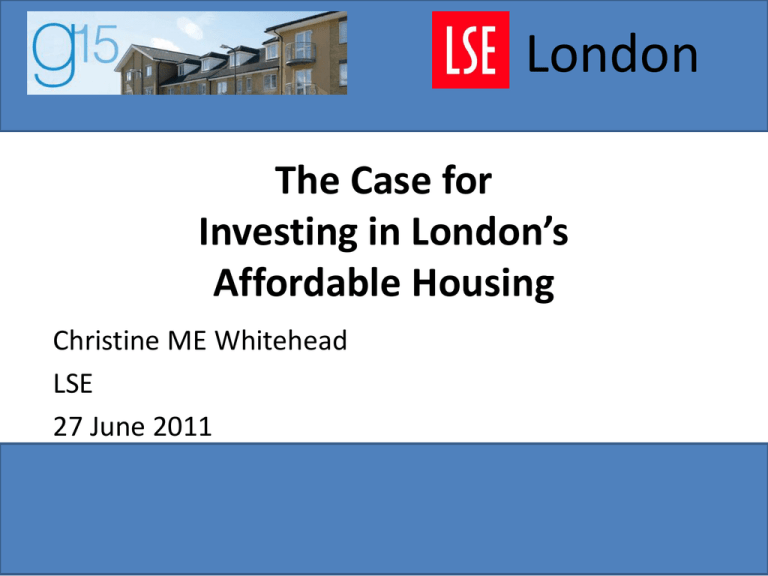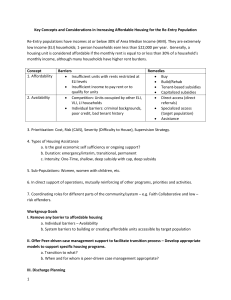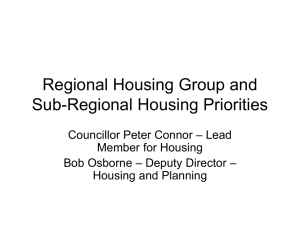London The Case for Investing in London’s Affordable Housing
advertisement

London The Case for Investing in London’s Affordable Housing Christine ME Whitehead LSE 27 June 2011 London Objective of the Study – To clarify the case for investment in affordable housing in London – To show why government funding is core to success London Three Main Criteria 1. Housing need to achieve a decent home for every household 2. The wider benefits of affordable housing to health and wellbeing, the economy and the public purse 3. Numbers that can be provided London Housing Need •More households than dwellings and this balance is set to worsen •Far less space per person then in the rest of the country •40% of all overcrowded households •25% of all homeless households •75% of all households living in temporary accommodation •Rents much higher but incomes at lower end of the scale similar to the rest of the country London Wider Benefits 1: Costs of Poor Housing •Strong relationship between poor housing and – Health costs – Education costs – Reduced employability/productivity – Crime and anti-social behaviour •The lack of affordable housing a major concern to the business community and therefore economic activity •Costs of poor housing concentrated in London because of numbers – especially in temporary accommodation and unit costs of alleviation Wider Benefits 2: Use of Resources • Land used more intensively and infrastructure usually already in place • Homes used more intensively – only 10% of new homes allocated above minimum occupancy standard as compared to 40% elsewhere • Affordable housing mix includes a higher proportion of intermediate (shallow subsidy) homes • Affordable housing in London levers in more private housing especially since the financial crisis • Construction multiplier benefits the whole country Numbers (1) •To maximise numbers from a given quantity of grants would mean building tiny flats in low demand areas •London is the opposite – high demand and high cost and needs larger units •But the case for subsidy should be based on value for money and on capacity to deliver and to lever in additional housing - not simply on subsidy per unit •This is especially true as the alternative cost of income related subsidy in the private rented sector is much higher in London than elsewhere Numbers (2) • London is currently providing 30% of new social housing across the country • Although rents can be raised to provide greater borrowing power there are major limits – The existing pipeline and slow turnover – Low wages – The effect on the benefits bill – The negative impact on work incentives – The increased risks of borrowing – The impact of the welfare cap especially on larger households • Makes sense to concentrate subsidy where added value is highest not where rents already close to market Conclusions •Without London’s contribution the national pledge of 150,000 affordable homes in this Parliament cannot be met •The case for investment based on housing need is overwhelming •Affordable housing investment is used more intensively and has the greatest effect on alleviating the social costs of poor housing •Affordable housing in London supports the growth agenda, provides more employment and helps the labour market •Subsidy is a necessary part of delivering affordable housing and London has the greatest need for that housing


